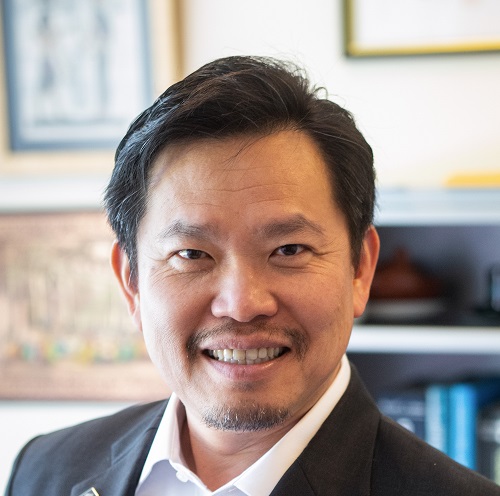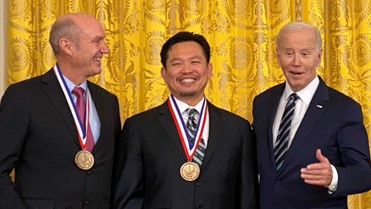
- This event has passed.
PRECISE Seminar: Optical Coherence Tomography – From Conception to Current Frontiers
April 25, 2024 at 2:00 PM - 3:00 PM
Optical coherence tomography (OCT) is a technology invented in 1991 to image small critical tissue structures throughout the body with micrometer resolution. It is widely used in the management of eye and coronary heart diseases. In 2023, OCT received broad attention when its inventors received the prestigious Lasker-DeBakey Clinic Medical Research Award and the National Medal of Technology and Innovation from President Biden. For me, it was the culmination of 3 decades of work as an engineer, clinician, and translational researcher, as well as an even longer journey as an immigrant who tapped into the potential of America’s great research universities.
I will present OCT from an inventor’s perspective. The physical principles will be explained with illustrations on measuring the time-of-flight of light with interferometry. I will tell the story of the aha moment when the idea of OCT came to my mind, as well as the rapid pace of development that made OCT a clinical reality. The biggest applications of OCT in the management of eye diseases will be shown. Recent advances made at OHSU that enable OCT to advance beyond the imaging of tissue structure to the detection of blood flow and photoreceptor function will be described.
OCT is still a rapidly developing technology. The technical capabilities have improved in many aspects, but the most astounding has been the continual improvement in imaging speed, which has doubled approximately every 2.5 years over the past 3 decades. The technological advances have made more and more clinical applications feasible. I will present a vision for the broader applications of OCT, which includes imaging the eye to assess brain and cardiovascular diseases, as well as direct OCT imaging of other target organs such as the skin, digestive tract, brain, inner/middle ear, and teeth.

David Huang, M.D., Ph.D.
Director of Research & Associate Director, Casey Eye Institute
Dr. David Huang is the Director of Research of Casey Eye Institute, the Wold Family Endowed Chair in Ophthalmic Imaging, and Professor of Ophthalmology and Biomedical Engineering at the Oregon Health & Science University. Dr. Huang leads the Center for Ophthalmic Optics and Lasers (COOL Lab), which comprises 6 faculty members engaged in both technology development and clinical research. He is a practicing ophthalmologist specializing in cornea and refractive surgery.
Dr. Huang is known for his innovations in applying laser and optical technology to eye diseases. He is a co-inventor of optical coherence tomography (OCT), a commonly used ophthalmic imaging technology with 40 million procedures performed annually worldwide. His seminal article on OCT, published in Science in 1991, has been cited more than 18,000 times. Dr. Huang contributed to many advancements in OCT technology and clinical application, including polarization-sensitive OCT, anterior eye OCT, macular OCT for glaucoma evaluation, Doppler OCT for retinal blood flow measurement, and OCT angiography in eye diseases. He has published more than 350 peer-reviewed articles with over 60,000 citations (H-index 95) and holds 42 US patents. Dr. Huang has received the Champalimaud Vision Award, the Friedenwald Award from the Association for Research in Vision & Ophthalmology, the Russ Prize from the National Academy of Engineering, the Lasker-DeBakey Clinical Medical Research Award – one of the United States’ most prestigious biomedical research award, and the National Medal of Technology and Innovation – the nation’s highest honor bestowed by the President on technology innovators. He is a member of the National Academy of Engineering and a fellow of the National Academy of Inventors and the American Ophthalmological Society. He is a cofounder of Gobiquity, maker of the GoCheck Kids smartphone app that has screened more than 5 million preschool children for amblyopia risk factors.
Dr. Huang earned BS and MS degrees in electrical engineering from MIT, and MD-PhD degrees from the joint Harvard-MIT Health Sciences and Technology Program. He received ophthalmology residency training at the Doheny Eye Institute/University of Southern California and cornea fellowship training at Emory University.

